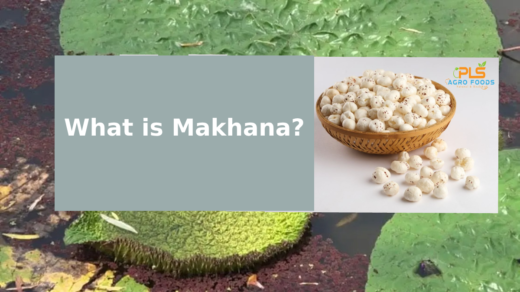In a landmark development for Bihar’s agricultural sector, Union Finance Minister Nirmala Sitharaman is set to visit Katihar on September 10, 2025, marking a pivotal moment for India’s makhana (fox nut) industry. This historic visit underscores the government’s commitment to transforming the traditional farming practices that have made Katihar the crown jewel of makhana production in India.
In a landmark development for Bihar’s agricultural sector, Union Finance Minister Nirmala Sitharaman is set to visit Katihar on September 10, 2025, marking a pivotal moment for India’s makhana (fox nut) industry. This historic visit underscores the government’s commitment to transforming the traditional farming practices that have made Katihar the crown jewel of makhana production in India.
Why is the Finance Minister Visiting Katihar?
The strategic importance of Finance Minister Sitharaman’s visit to Katihar extends far beyond a routine agricultural inspection. Her carefully planned itinerary includes specific interactions with makhana farmers at Chandeli Bharra village in Kalsar panchayat under Hasanganj block, where she will observe both traditional and modern makhana farming techniques.

The visit also encompasses a comprehensive tour of a makhana processing unit in Chhitabari, providing the Finance Minister with firsthand insights into the entire value chain from pond to market. Additionally, she will participate in crucial financial inclusion programs through credit outreach initiatives with banks, addressing one of the sector’s most pressing challenges – access to affordable credit for farmers and processors.
This governmental focus on makhana stems from the Union Budget 2025-26 announcement of establishing a dedicated Makhana Board in Bihar, allocated with ₹100 crores to improve production, processing, value addition, and marketing. The initiative is designed to benefit over five lakh farmers across the makhana-producing districts of Darbhanga, Madhubani, Sitamarhi, Saharsa, Katihar, Purnia, Kishanganj, Araria, Supaul, and Madhepura.
Katihar: The Undisputed Leader in Makhana Production
Katihar’s dominance in India’s makhana landscape is nothing short of extraordinary. The district currently produces approximately 12,900 metric tonnes of makhana annually, making it one of the largest individual contributors to India’s total makhana output. This impressive production figure places Katihar at the forefront of Bihar’s agricultural success story, with the state accounting for over 85% of India’s total makhana production.
The natural advantages that Katihar possesses for makhana cultivation are remarkable. The region’s year-round water availability, either through abundant rainfall or underground sources accessed via pump sets, creates ideal conditions for this aquatic crop. The Seemanchal region, which includes Katihar along with Purnia, Kishanganj, and Araria, has become synonymous with high-quality makhana production, employing thousands of families and generating substantial rural employment.
The cultivation and processing of makhana in Katihar involves highly skilled manual labor, with workers earning approximately ₹400-500 per day during harvesting seasons. This labor-intensive process, while challenging, has preserved traditional farming methods that contribute to the superior quality of Katihar’s makhana. The expertise of local communities, particularly the Mallah community who have been traditionally involved in makhana processing, represents centuries of accumulated knowledge in maximizing both quality and productivity.
Katihar’s Premium White Makhana: A Global Standard
What sets Katihar’s makhana apart in the global marketplace is its exceptional white color and superior quality characteristics. The premium white makhana from Katihar represents the gold standard in the international fox nut trade, commanding premium prices in export markets due to its consistent quality and aesthetic appeal.

The unique growing conditions in Katihar’s water bodies, combined with traditional processing techniques refined over generations, produce makhana with distinctive characteristics that are highly valued by international buyers. The white color, uniform size, and excellent taste profile of Katihar makhana make it the preferred choice for health-conscious consumers worldwide.
The nutritional profile of Katihar’s makhana is impressive, containing high levels of protein (9-10g per 100g), fiber (7-8g per 100g), and essential minerals including magnesium, potassium, calcium, and phosphorus. With only 350 calories per 100g and minimal fat content, makhana from Katihar perfectly aligns with global health and wellness trends
Katihar’s Position as a Leading Makhana Exporter
India’s position as the world’s largest makhana exporter is significantly strengthened by Katihar’s substantial contribution to the export supply chain. In 2023-24, India exported over 25,130 metric tonnes of makhana globally, with Bihar contributing the lion’s share of this export volume. Katihar’s high-quality production feeds into major international markets including the United States, United Kingdom, Canada, Australia, and United Arab Emirates.
The export potential from Katihar and surrounding regions is enormous, yet currently underutilized. Despite India producing approximately 40,000 metric tonnes of processed makhana annually, the country exports only about 1% of its total production. This presents massive opportunities for expansion, particularly for companies with strong processing capabilities and international market connections.
The lack of a dedicated HS code for makhana has been a challenge for exporters, as the product currently falls under HS Code 19041090 along with other processed cereals. However, this challenge also represents an opportunity for industry leaders to work with government agencies to establish better classification and tracking systems for makhana exports.
The Makhana Board: A Game-Changer for the Industry
The establishment of the Makhana Board represents the most significant policy intervention in the industry’s history. With a dedicated budget allocation of ₹100 crores, the board will focus on comprehensive improvements across the entire makhana value chain. The board’s mandate includes enhancing production techniques, upgrading processing infrastructure, improving value addition capabilities, and strengthening marketing channels both domestically and internationally.
For companies operating in the makhana space, the Makhana Board represents a unique opportunity to collaborate with government initiatives while scaling their operations. The board will facilitate the organization of farmers and processors into Farmer Producer Organizations (FPOs), creating more efficient supply chains and improved collective bargaining power.
The board will also provide crucial handholding and training support to makhana farmers, ensuring they receive benefits from all relevant government schemes. This comprehensive approach addresses long-standing issues in the sector, including inadequate processing infrastructure, lack of organized marketing channels, and limited access to financial support.
Global Health Trends Favoring Makhana
The timing of increased government support for makhana coincides perfectly with global health and wellness trends. Makhana is increasingly recognized as a superfood due to its impressive nutritional profile and numerous health benefits. The crop’s high protein content, rich fiber, essential minerals, and antioxidant properties make it an ideal snack for health-conscious consumers worldwide.
Research indicates that makhana consumption can support heart health by helping to lower LDL cholesterol and regulate blood pressure. Its high fiber content aids digestion and weight management, while the low glycemic index makes it suitable for diabetic consumers. These health benefits position makhana perfectly for the growing global functional food market.
The gluten-free nature of makhana opens additional market segments, particularly in Western markets where gluten-free products command premium prices. As a plant-based protein source, makhana also appeals to the growing vegan and vegetarian consumer base globally.
Mithila Makhana’s GI Tag: Adding Value and Authenticity
The Geographical Indication (GI) tag awarded to Mithila Makhana in 2022 has added significant value to the region’s produce, including Katihar’s contribution. This recognition not only protects the authenticity and uniqueness of the region’s makhana but also provides legal protection against unauthorized use of the name.
The GI tag helps growers obtain maximum prices for their premium produce and enhances export potential by providing international buyers with assurance of quality and authenticity. For companies sourcing makhana from the region, the GI tag adds credibility and premium positioning in international markets.
Technology and Innovation Opportunities
The Finance Minister’s visit to modern processing units signals the government’s interest in promoting technological advancement in makhana processing. Current processing methods, while preserving traditional quality, could benefit from selective modernization to improve efficiency and scale.
Opportunities exist for implementing drone technology for monitoring makhana ponds, automated sorting and grading systems, and improved packaging technologies for export markets. The Makhana Board’s focus on processing and value addition creates space for technological partnerships and innovation investments.
Employment and Rural Development Impact
The makhana industry in Katihar provides substantial employment, with direct employment for approximately 250 workers in processing units and indirect employment for around 500 additional workers in the identified makhana cluster. The industry’s labor-intensive nature makes it a significant contributor to rural employment and income generation.
The seasonal nature of makhana cultivation and processing provides crucial income opportunities during specific periods, helping farming families diversify their income sources. Women’s participation in makhana processing activities creates additional employment opportunities and supports gender-inclusive rural development.
Infrastructure Development Supporting Growth
The government’s broader infrastructure development plans for Bihar, including airport expansions and new greenfield airports, directly benefit makhana exports by improving logistics connectivity. The expansion of Patna airport and planned airports in Purnea and Darbhanga will significantly reduce transportation costs and time for makhana exports.
The West Kosi Canal project, receiving special financial support in Budget 2025, will improve irrigation facilities in the Mithilanchal region, potentially expanding the area suitable for makhana cultivation. This infrastructure development creates a supportive ecosystem for industry growth.
Challenges and Opportunities Ahead
Despite the positive developments, the makhana industry faces several challenges that present opportunities for innovative companies. The lack of cold storage facilities affects quality preservation, while limited processing capacity constrains value addition. Marketing challenges persist, particularly in developing consistent branding for international markets.
Financial constraints continue to affect small farmers and processors, despite the new credit outreach programs. Companies that can provide integrated solutions addressing multiple challenges simultaneously will be best positioned to benefit from the government support and market opportunities.
The Path Forward
Finance Minister Sitharaman’s visit to Katihar represents more than a policy gesture—it signals a fundamental shift in how the government views the makhana industry’s potential. The comprehensive approach involving the Makhana Board, infrastructure development, financial inclusion, and technology promotion creates a conducive environment for sustainable industry growth.
For companies operating in this space, the current period represents a unique window of opportunity to scale operations, improve quality standards, and expand market reach. The combination of government support, growing global demand, and Katihar’s natural advantages in makhana production creates a compelling investment case.
The industry’s transformation from traditional farming to modern agribusiness is already underway, driven by increasing recognition of makhana’s superfood status and export potential. Companies that can successfully navigate this transition while maintaining quality standards and farmer relationships will emerge as leaders in India’s makhana success story.
As the Finance Minister interacts with farmers like Mohan Thakur and Awadhesh Kumar Thakur in Chandeli Bharra village, she will witness firsthand the dedication and expertise that has made Katihar synonymous with premium makhana quality. This grassroots engagement, combined with policy support at the highest levels, positions the industry for unprecedented growth and global recognition.
The makhana industry in Katihar stands at the threshold of a new era, where traditional expertise meets modern market opportunities, supported by comprehensive government initiatives. For stakeholders across the value chain, from farmers to processors to exporters, the message is clear: the time for makhana’s global moment has arrived, and Katihar is leading the charge.
- Finance Minister Nirmala Sitharaman’s Historic Visit to Katihar: A New Era for India’s Makhana Industry and Global Export Opportunities
- How women run collective enterprises are reviving makhana processing in PLS Makhana.
- Why Should Men Eat Makhana? 5 Makhana Benefits for Males
- Unlocking the Potential of Makhana: A Rising Star in the Global Superfood Market.
- Which disease is cured by eating Makhana? Learn and eat this way






